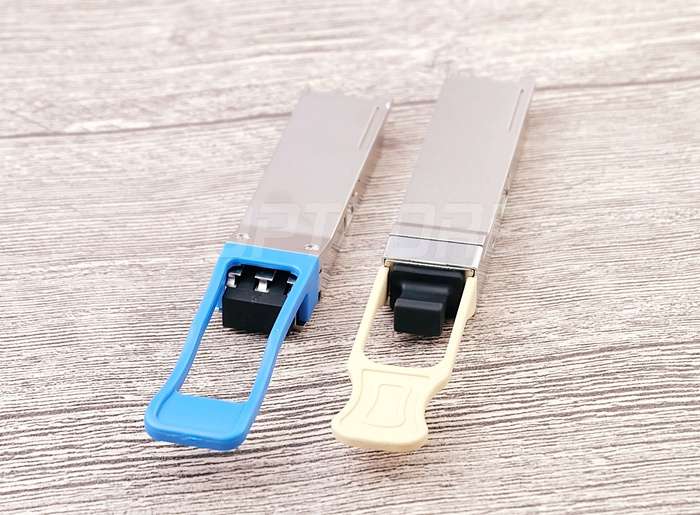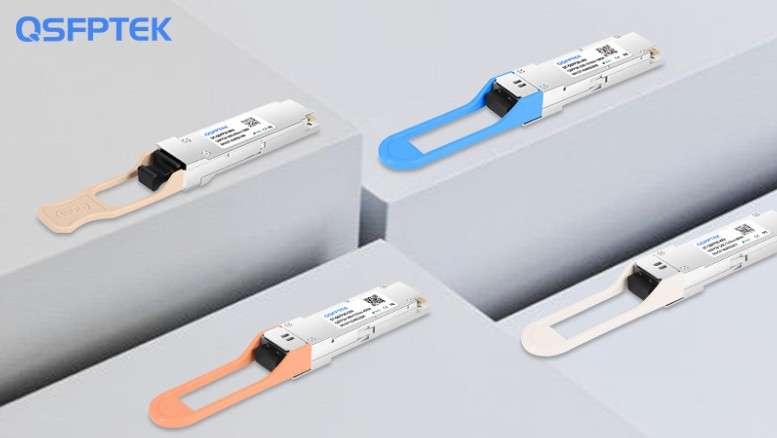Understanding 100G QSFP28 SR4 vs LR4 vs ER4 vs ZR4

In today’s data-intensive landscape, high-performance networking solutions are essential infrastructure. Among these, 100G QSFP28 dual-fiber optical modules serve as critical transmission components. This examination details four primary variants: SR4, LR4, ER4, and ZR4 models, each engineered for specific operational environments.

QSFP28-100G-SR4
This parallel optical transceiver utilizes four-channel 25G NRZ technology with multimode transmission. During operation, electrical signals undergo conversion to optical format through an 850nm VCSEL laser array, transmitting across ribbon fiber via MPO connectors. The receiving terminal reconstructs parallel electrical signals through photodetector arrays. Designed for short-reach applications, it achieves 100m over OM3 or 300m over OM4 multimode fiber, fully compliant with 100GBASE-SR4 standards. Its technical advantages include per-channel data rates reaching 27.952 Gbps, reliable VCSEL technology, and comprehensive digital diagnostics per SFF-8436 specifications.
QSFP28-100G-LR4
Employing wavelength division multiplexing (LWDM4) technology, this module converts quad 25Gbps electrical streams into LAN WDM optical signals. These wavelengths merge into a single optical channel for transmission, with the receiving system demultiplexing and reconverting them into electrical outputs. Operating through duplex LC interfaces on single-mode fiber, it delivers 10-20km reach while adhering to 100GBASE-LR4 standards. Key characteristics include 103.125 Gbps aggregate bandwidth, 25.78 Gbps channel transmission, and integrated diagnostics meeting EU Directive 2015/863 compliance.
QSFP28-100G-ER4
Engineered for extended reach, this solution transforms four 25Gb/s electrical inputs into LAN WDM optical channels that multiplex into a unified 100Gb/s stream. The reception path demultiplexes incoming signals into four optical channels before conversion to electrical outputs. Utilizing EML lasers and APD receivers over single-mode fiber, it achieves 40km transmission distances compliant with 100GBASE-ER4 specifications. Operational features encompass 25.78 Gb/s channel rates, advanced monitoring via I²C interfaces, and configurable functions including TxDIS and LPMode controls.
QSFP28-100G-ZR4
Optimized for ultra-long-haul applications, this full-duplex transceiver incorporates optical amplification technology. Transmission begins with clock-recovered electrical signals driving four laser drivers, while received signals undergo SOA amplification before demultiplexing. Through LAN WDM EML lasers and PIN SOA receivers on single-mode pathways, it surpasses 80km transmission under OIF-100G-ZR standards. The architecture supports 103.125 Gbps line rates with per-channel 25.78 Gb/s performance, featuring comprehensive diagnostics and control functionality.
| Model | Max. Distance | Walvelength | Fiber Type |
| QSFP28-100G-SR4 | 100m | VCSEL 850nm | OM3/OM4 MMF |
| QSFP28-100G-LR4 | 10km | EML 1295-1310nm | OS2 SMF |
| QSFP28-100G-ER4 | 40km | EML 1295-1310nm | OS2 SMF |
| QSFP28-100G-ZR4 | 80km | EML 1295-1310nm | OS2 SMF |
How to Choose 100G QSFP28 SR4 vs LR4 vs ER4 vs ZR4?
Four core dimensions need to be comprehensively evaluated in actual deployment:
- Transmission distance determines the basic selection framework – SR4 multimode solution is preferred for 100-meter interconnection; LR4 is used for 10-20 km metropolitan area coverage; ER4 is suitable for 40 km data center interconnection; and ZR4 ultra-long distance capability is required for cross-city backbone links of more than 80 km.
- Optical fiber infrastructure constitutes key constraints: existing OM3/OM4 multimode optical fibers are forced to use SR4 modules; OS2 single-mode optical fiber networks are compatible with LR4/ER4/ZR4, which need to be selected step by step according to distance requirements.
- The cost dimension shows significant differences: SR4 achieves optimal cost due to VCSEL technology; LR4/ER4 increases cost by 30%-60% due to EML lasers and temperature control circuits; ZR4 has a premium of 2-3 times due to SOA amplifiers and complex optical path design.
- Future scalability cannot be ignored: ER4/ZR4 supports smooth evolution to 400G-ZR/ER4; SR4 is limited to multimode optical fibers and is only suitable for cabinet fixed scenarios. It is recommended that, under the premise of meeting current performance requirements, modules with open optical interfaces be given priority to retain room for technology upgrades.
Summary
These four QSFP28 variants establish distinct performance tiers: SR4 serves cost-effective rack interconnects; LR4 balances metro applications; ER4 enables campus-scale connectivity; ZR4 facilitates carrier-grade distances. Selection requires evaluating transmission distance, existing fiber infrastructure (multimode vs. single-mode), operational budgets, and future scalability requirements. Understanding each module’s technical parameters ensures optimal deployment across data centers, enterprise networks, and telecommunications infrastructure.



